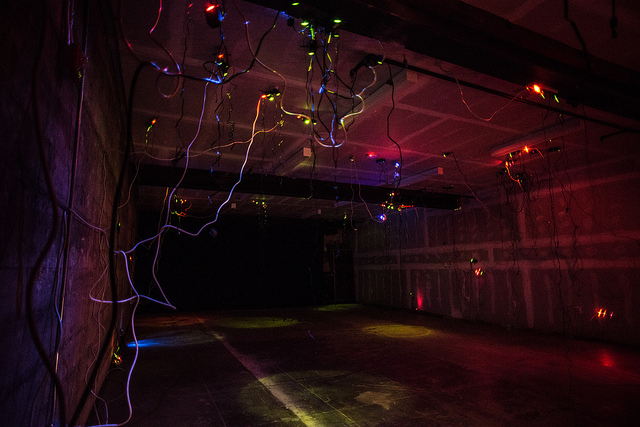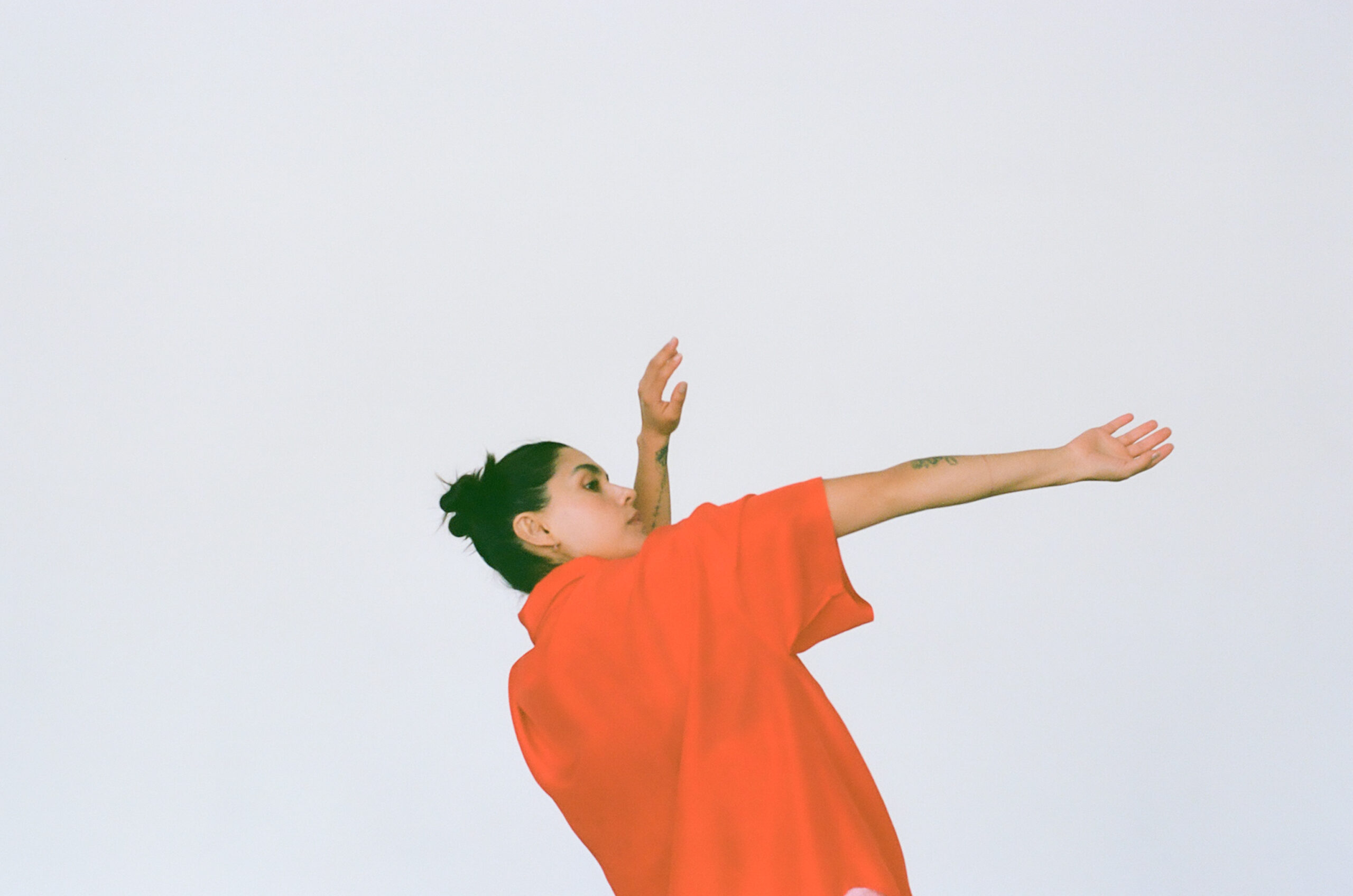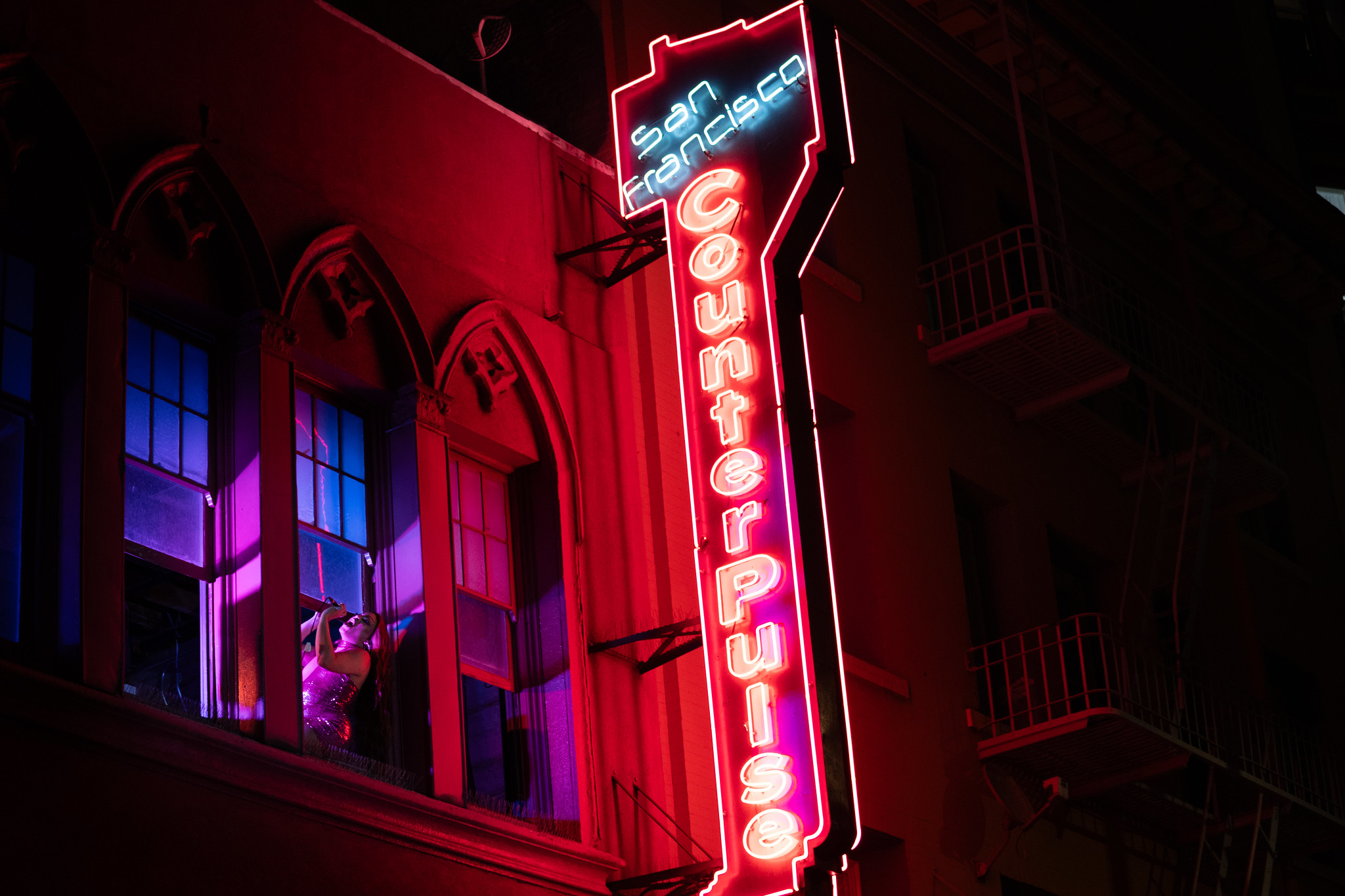Project Space artist Alice Combs: power and idleness
By Erica Dixon
I had a great conversation with Alice Combs, our March Project Space resident artist, during her residency earlier this month. We sat down in the windowless, concrete room amidst her then in-process installation, charger cables hanging from the ceiling all around. While in residence at CounterPulse, Alice installed Total Turn On, a project exploring power and turn on, through plugged in chargers connected to nothing. The installation of different indicator lights in the pitch black room, and the pale shadows of curling cords, were reminiscent of a post-apocalyptic night sky. Read on to hear about Alice’s process and her meditations on the importance of idleness as an artist.
Erica Dixon: Can you tell me about your artistic background and how this relates to new your new work?
Alice Combs: My background is in painting. What painting did for me was make me aware of myself as an artist, it was a starting point. In grad school I branched out, I saw a lot of people who were working with non-traditional mediums, and I was like, “Oh I want to do that!” And it was really freeing.
This new piece is a continuation this and just of having an idea that starts really small and running with it, not being afraid of using mundane materials. And using them to create some kind of deeper meaning. I think that’s what all art does anyway.
ED: Speaking of materials and meaning, I enjoyed your statement about the piece, how this installation is exploring power, and I’m curious what your initial point of inquiry was: did the materials speak to you first, or did you start from wanting to say something about power and these were the materials you chose?
AC: It wasn’t that broad of a point of entry. I felt empathy with the lights in my devices and I started thinking about idleness versus working. All of these devices are not really working. They’re lighting up, but they’re not doing anything. The idea that there is all this potential power to this collection of items is interesting to me. The process of collecting old chargers forced me to participate in informal economies like buying from sidewalk vendors and flea markets, where there are all types of negotiations I was making concerning what type of power I had or didn’t have in relation to the sellers. It felt very tangled and unclear, which is part of the reason I left the cords dangling or messy instead of hiding them more.
And there is a lot of points of connection between the state of being an artist and these indicator lights. It’s important as an artist to be idle a lot of the time. To outsiders to an art practice it’s not very apparent how important idleness is. And it can be hard to explain. Even when I came into this room, it took a lot of sitting around and thinking about the actuality of it.
ED: I totally know what you mean. I sometimes find myself literally just lying on the floor of my studio.
AC: Yes, exactly! And instead of feeling bad about it, I think you’ve got to just do what you got to do.
ED: Do you have an example of a time where you were being very idle and new project was born?
AC: That’s how all my projects start! Usually its like before you fall asleep. Just being still and all the sudden I’m like I should do that. Or I’ll be reading and I’ll be like, “Oh, that’s what I should have done.” It’s kind of like when you think about what would have been a really funny joke after the fact. I am always observing or reading and then when I’m still still, all the things I’ve absorbed can just come out.
ED: Is there any sort of regiment to this idleness? I always love reading those really specific daily routines from famous artists…
AC: It’s funny that you should mention this schedules because I usually never make one, but I did today! I make a lot of lists but I actually never stick to them. I normally lose track of time, but I’ve learned to be more forgiving with myself about that.
ED: Do you have a specific moment of collision between the necessity of a certain amount of timelessness for art making and the demands and systems of the everyday world we have to move around in?
AC: In making this piece I was playing with light on, lights off a lot. And I got a little lost with it. And I remembered that I wanted to bike home before it started it raining, but I took too long so I just biked home in the rain.
The overachiever in me wants to stick to schedules. I have every intention to be that, but I can’t help not being that way sometimes.
ED: Totally. Last question, what is up next for you in this process or other projects?
AC: I’m in a show at the Tenderloin museum that opens on the 16th . I’ve been polishing rusty objects, and those pieces are there, along with Susa Cortez’s work, who is also with Root Division. I teach youth at Root Division, and their work will be in the show too.
No plans yet for this project. We’ll see what happens. I’d like to see it travel around, and work with different arrangements.
See photos of Total Turn On here. Learn more about Alice’s work on her website, alicecombs.com, and Catch More than Roof and Walls at the Tenderloin Museum featuring new works by Alice Combs, Susa Cortez, and youth artists from Root Division, open through April 29, 2017.
Share This!
More Good Stuff
CounterPulse ARC Edge Resident Diana Lara's "Savia~Sap flow: Embodied Connection with Ancestry and Nature" opens June 6-7 & 13-14, 2024 Get your tickets here
CounterPulse ARC Edge Resident gizeh muñiz vengel's "auiga" opens June 6-7 & 13-14, 2024 Get your tickets here! View the show program photo by
In a landmark declaration of support for the arts in San Francisco, State Assemblymember Matt Haney has pushed CounterPulse to the finish line of their





